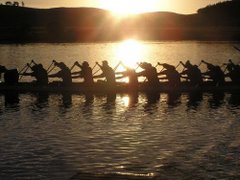
In 1956, Benjamin Bloom headed a group of educational psychologists who developed a classification of levels of intellectual behaviour important in learning.
Bloom identified six levels within the cognitive domain, from the simple recall or recognition of facts, as the lowest level, through increasingly more complex and abstract mental levels, to the highest order which is classified as evaluation.
Verb examples that represent intellectual activity on each level are listed here.
Knowledge: arrange, define, duplicate, label, list, memorize, name, order, recognize, relate, recall, repeat, reproduce state.
Comprehension: classify, describe, discuss, explain, express, identify, indicate, locate, recognize, report, restate, review, select, translate,
Application: apply, choose, demonstrate, dramatize, employ, illustrate, interpret, operate, practice, schedule, sketch, solve, use, write.
Analysis: analyze, appraise, calculate, categorize, compare, contrast, criticize, differentiate, discriminate, distinguish, examine, experiment, question, test.
Synthesis: arrange, assemble, collect, compose, construct, create, design, develop, formulate, manage, organize, plan, prepare, propose, set up, write.
Evaluation: appraise, argue, assess, attach, choose compare, defend estimate, judge, predict, rate, core, select, support, value, evaluate.
Below are the six question categories as defined by Bloom.
KNOWLEDGE
remembering;
memorizing;
recognizing;
recalling identification and
recall of information
Who, what, when, where, how ...?
Describe
COMPREHENSION
interpreting;
translating from one medium to another;
describing in one's own words;
organization and selection of facts and ideas
Retell...
APPLICATION
problem solving;
applying information to produce some result;
use of facts, rules and principles
How is...an example of...?
How is...related to...?
Why is...significant?
ANALYSIS
subdividing something to show how it is put together;
finding the underlying structure of a communication;
identifying motives;
separation of a whole into component parts
What are the parts or features of...?
Classify...according to...
Outline/diagram...
How does...compare/contrast with...?
What evidence can you list for...?
SYNTHESIS
creating a unique, original product that may be in verbal form or may be a physical object;
combination of ideas to form a new whole
What would you predict/infer from...?
What ideas can you add to...?
How would you create/design a new...?
What might happen if you combined...?
What solutions would you suggest for...?
EVALUATIONmaking value decisions about issues;
resolving controversies or differences of opinion;
development of opinions, judgements or decisions
Do you agree...?
What do you think about...?
What is the most important...?
Place the following in order of priority...
How would you decide about...?
What criteria would you use to assess...?
above from source:
www.educationforum.co.uk/HA/bloom.htm My thoughts on Bloom:
I agree with Bloom that there are levels of comprehension and learning. For example, being able to recognise an apple is different to being able to describe an apple. Understanding the genetics of an apple and modifying them to create a seedless, or insect resistant apple is something else entirely.
Bloom's taxonomy reminds me very much of Piaget, in that the lower order levels of thinking describe the levels of thought that children are capable of. As children go through the stages of development, they become capable of higher levels of thinking.
I think that when it comes to teaching and learning, while you do want your students to achieve these higher levels of thought, it shouldn't be the aim of every lesson. For example, when you are introducing a new topic to a class, if you being with surface learning, teaching the class the basics, then you can more comfortably move onto deep learning and higher levels of thought as the class has a good base knowledge and confidence with this new information.










